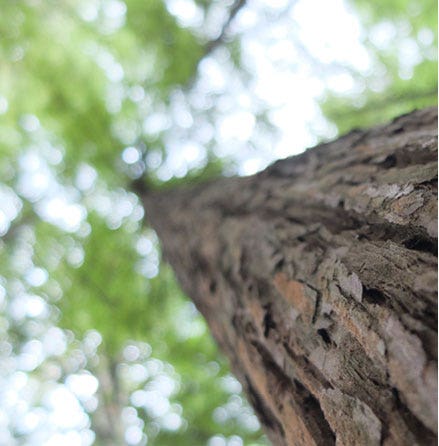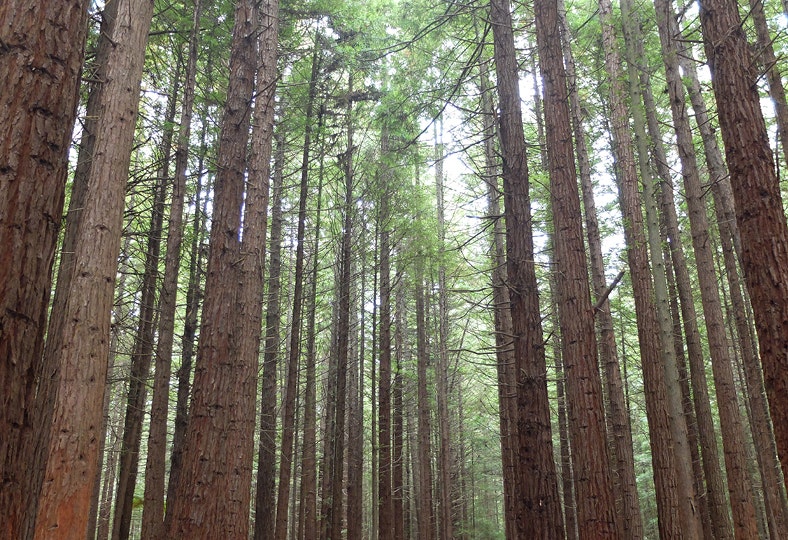An engineering marvel, Rotorua’s Redwoods Tree Walk lets you experience what it’s like to be a bird or a tree-sitting protestor.
There’s something magical about being up in the canopy of a forest. Maybe it’s the way the noises of the world become muffled and inconsequential; maybe it’s the paleness of the light up there, the daintiness of dappled shadows. Maybe the air you’re breathing is enriched by healthful chlorophyll? OK, now I’m reaching.
But there’s no doubt that being high up in the upper reaches of a forest is a wonderful thing, which is why I had no problem paying $59 (for 2 adults and up to 3 kids) to do the Redwoods Tree Walk, which opened in the Whakarewarewa Forest just south of Lake Rotorua in December.
The creation of Alex Schmid, a German engineer who’s now a Rotorua local, the tree walk is a 553m-long series of macrocarpa suspension bridges and small decks, slung between the tall redwoods, about 6-12 metres above the forest floor. Everything is secured by a complex web of thick, soft ropes — there are no bolts going into these 100 year old trees — and the bridges bounce and sway slightly as you walk along them, adding to the magical surrealism vibe. On a wet day, drizzle helps to illuminate some very impressive spider webs.
Schmid was in the forest when he had a vision of what he would later create. “I looked straight up one of the massive redwoods’ trunks and had gooseflesh,” he recalls. The planning process took five years, and construction began with climbing ropes being shot into the trees with a special arborist’s tool that resembles a giant slingshot.

As wonderful as it is to wander through this immense grove of redwoods, you do wonder how so many Californian trees ended up here. The forest was planted in 1901, just 15 years after Tarawera erupted, as part of a long-term commercial trial to discover what would grow best in New Zealand’s climate. (These days, they’re trialing the use of drones for forest management.)
Douglas Fir, Australian eucalypts, English walnut, Japanese cedar, Mexican cypress and lots of other species were planted, over the course of several decades 170 species altogether and Radiata Pine flourished the best, becoming the backbone of our forestry industry. The inner heart of New Zealand’s redwoods are paler and softer than in California and of the 12 hectares of redwoods planted, only 6 remain.
There is a grand tradition of protecting redwoods and publicizing other issues by tree sitting: building a platform or slinging a hammock between two boughs and just staying up there for as long as it takes.
In the late 90s, a young environmental activist called Julia Butterfly Hill lived for two years in a 1500 year old Californian redwood, to prevent it from being logged. (A few years later, when Hill was involved in protesting the logging of virgin forests in Ecuador for an oil pipeline, the Ecuadorean president told media, “The little gringos have been arrested, including the old cockatoo who climbs trees.”)

But the firstever tree sit happened here in New Zealand. In 1978, the Forest Service was all set to log the Pureora Forest, a vast and ancient rain forest in the middle of the north island, full of 1000 year old totara. Using ropes and vines, protesters installed themselves in platforms in the trees, while forestry workers actually set about logging trees around them. Within days, though, the protestors had won and Pureora is now a national park full of kahikatea, matai, miro, rimu, totara, katote and, miraculously, the endangered North Island kokako.
In comparison, Whakarewarewa is practically silent. There are native species, but they’re generally invisible hiding in the soil, or sleeping all day. Up in the redwoods canopy, it’s just lots of native ferns, the occasional fantail or tui, and your own thoughts.
The Redwoods Tree Walk is $25 per adult and $15 per child, with deals for locals and family groups. It’s open 9am-5pm and takes about 30 minutes. For more info, visit treewalk.co.nz

